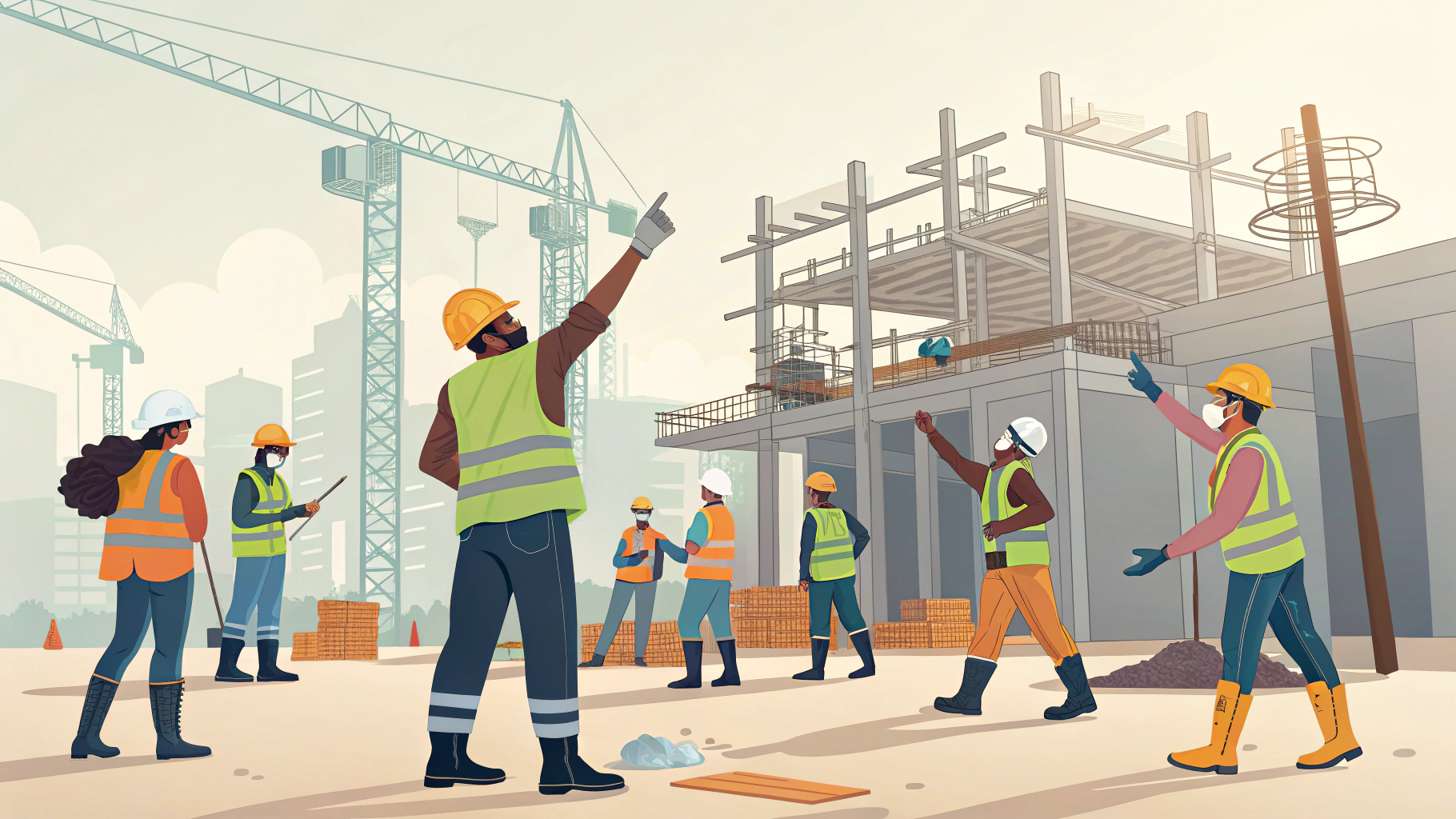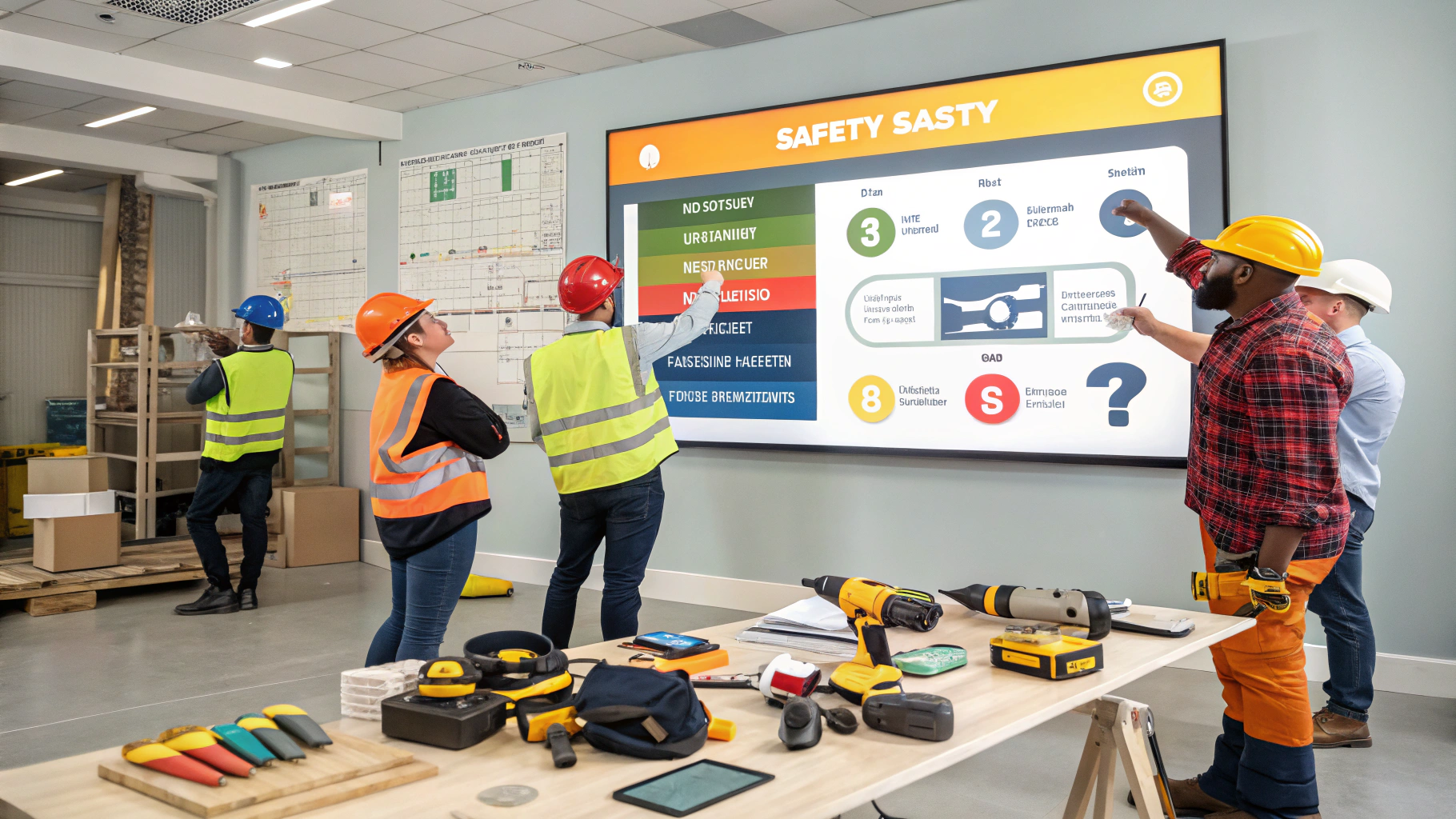Construction Safety Training: Enhancing Your Trades Team’s Skills
With construction being a dangerous industry, safety is more than just a compliance checkbox but a cornerstone of operational success. In 2023, OSHA reported over 5000 fatal construction-related injuries. This shows the urgency for robust safety training programs has never been clearer. For trades teams navigating risks like falls and electrical hazards, a well-designed program isn’t optional, it’s life-saving. Here’s how to build training initiatives that protect workers while fostering a culture of expertise.

Core Elements of Effective Construction Safety Training
Every construction site presents diverse and overlapping hazards, but these foundational components reduce incidents across trades.
Hazard Identification and Risk Mitigation
Training must teach workers to recognize threats like unstable scaffolding, live wires, and falling debris. OSHA emphasizes structured risk assessments as the first step in safety management, enabling teams to prioritize controls like barriers or signage 1. For example, weekly site walks to flag hazards have reduced tripping incidents by 37% in roofing crews 2.
Mastery of Personal Protective Equipment (PPE)
Helmets, harnesses, and gloves only work if used correctly. Training should clarify PPE selection, inspection, and maintenance. A 2024 SafetyCulture study found improper respirator use caused 23% of avoidable chemical exposures in demolition work 32.

Equipment Handling and Emergency Preparedness
From nail guns to cranes, hands-on demonstrations reduce mishaps. Monthly equipment refreshers paired with evacuation drills help workers internalize protocols. Teams using this approach report 40% fewer malfunction-related injuries.

Clear Communication Standards
Miscommunication kills on noisy job sites. Standardizing hand signals and radio protocols cuts errors in hazardous tasks—one telecom project saw crane misalignment incidents drop 30% after implementing visual guides.

Legal Compliance: Aligning with Regulations
OSHA mandates form the backbone of safety training. Key requirements include:
- OSHA 10-Hour Training: Covers essentials like fall protection for entry-level workers.
- OSHA 30-Hour Certification: Focuses on hazard communication and inspections for supervisors.
- Documentation: Maintain records of training, incidents, and inspections. In 2024, California audits found 30% of violations stemmed from incomplete paperwork 5.
Tailoring Construction Safety Training to Trade-Specific Risks
Customizing programs ensures relevance.
For Carpenters: Defying Gravity
Falls cause 35% of construction fatalities. Rooftop simulations and scaffold assembly drills reinforce guardrail protocols. A Florida contractor reduced fall-near misses by 52% after adopting VR-based height training 6.
For Electricians: Taming Live Currents
Lockout/tagout drills and arc-flash simulations are non-negotiable. Utility crews using VR to replicate high-voltage scenarios cut electrical injuries by half 7.
For Heavy Equipment Operators: Seeing the Unseen
Blind spots claim lives. Training with 360-degree camera feeds and “spotter checklists” helped a Midwest earthmoving team eliminate collision incidents for 18 months 89.

Overcoming Implementation Barriers
Even stellar programs face hurdles.
Time and Budget Constraints
Microlearning solves tight schedules: 15-minute daily mobile modules on ladder safety or PPE checks keep knowledge fresh without disrupting workflows 10. Pairing OSHA grants with local apprenticeship funds expands access to hands-on workshops 11.
Engaging Veteran Workers
Gamification bridges generational gaps. Safety quizzes with tool vouchers as prizes boosted participation by 60% among crews with 10+ years’ experience.

Language and Literacy Challenges
Visuals transcend words. A Texas contractor slashed compliance violations by 75% using pictogram-based checklists and Spanish/English VR tutorials 1213.
Case Study: Wallick Communities’ Back-Injury Breakthrough
Facing skyrocketing workers’ comp claims, this Ohio firm launched biweekly online modules on lifting techniques and tool maintenance. “The LMS let us train during downtime—no lost productivity,” says safety director Maria López. Within six months, musculoskeletal injuries dropped 45% across 200+ tradespeople 1415.
Leveraging Technology for Immersive Learning
Innovation is rewriting safety education.
Virtual Reality: Risk-Free Repetition
VR immerses workers in hyper-realistic scenarios, like stabilizing a collapsing trench. After adopting VR drills, a Nebraska contractor slashed excavation incidents by 80% 9. “Simulations made blind-spot risks click for my team,” says crane operator Carl Ruiz.
E-Learning Platforms: Knowledge On-Demand
Cloud systems like HSI offer self-paced OSHA courses with progress dashboards. Users complete training 50% faster than with in-person sessions, freeing up 12,000+ hours annually for a mid-sized plumbing firm.
Wearables: Real-Time Coaching
Smart helmets track head movements during overhead work, alerting users to neck strain. Early adopters report 34% fewer soft-tissue injuries 17.
Measuring Success Beyond Incident Counts
Training’s impact extends beyond accident logs.
Tracking Behavioral Shifts
Post-training quizzes and focus groups uncover gaps. One HVAC company revamped ladder training after 40% of workers misreported weight limits.
Leading vs. Lagging Indicators
While injury rates (lagging) matter, prioritize leading metrics like near-miss reports. Teams with 70%+ participation in safety committees have 60% lower injury rates 18.
Sustaining Safety Through Continuous Learning
Safety is a journey, not a destination.
Quarterly Refreshers
Address emerging risks like drone operations or exoskeleton use. A New Jersey crew averted four crane-electrocution incidents after a power-line awareness update.
Mentorship Programs
Pairing rookies with veterans embeds safety habits. Mentored hires at a Denver site had 67% fewer first-year incidents than solo learners.


Conclusion
Construction safety training is your best defense against the unpredictable. By combining trade-specific drills, tech-driven simulations, and relentless refinement, you arm teams with the vigilance to navigate hazards. As regulations evolve, prioritize adaptable programs that turn OSHA standards into second nature, because a protected workforce builds stronger futures.

